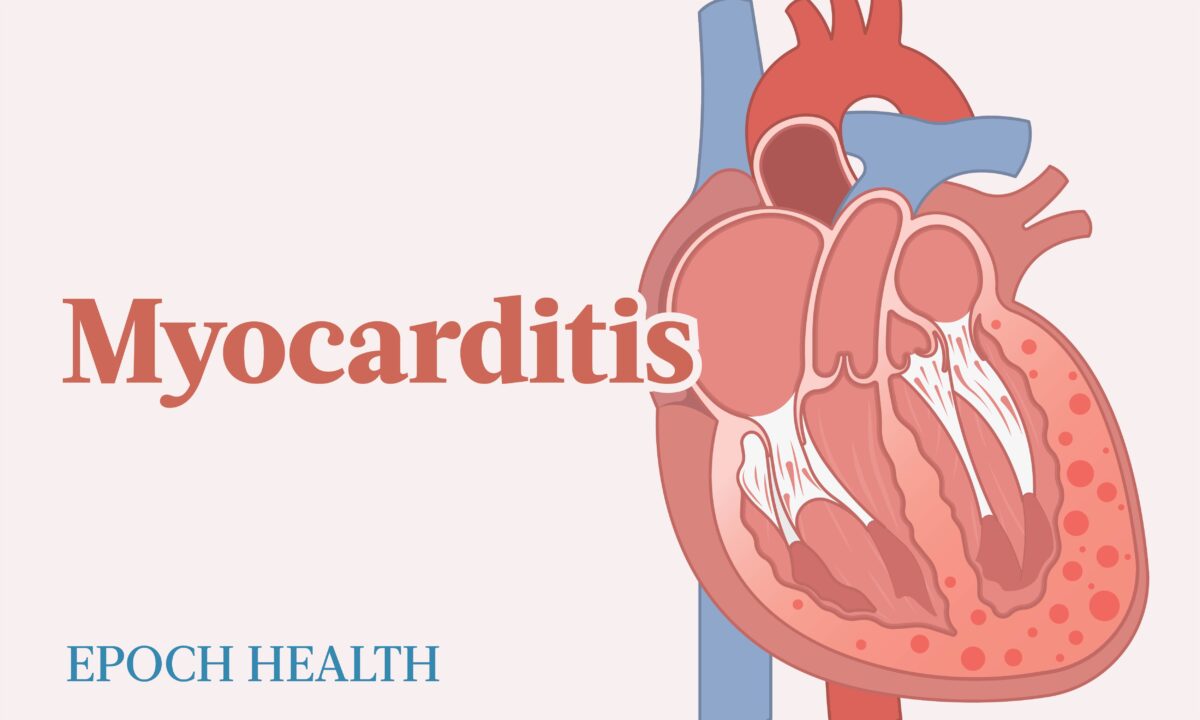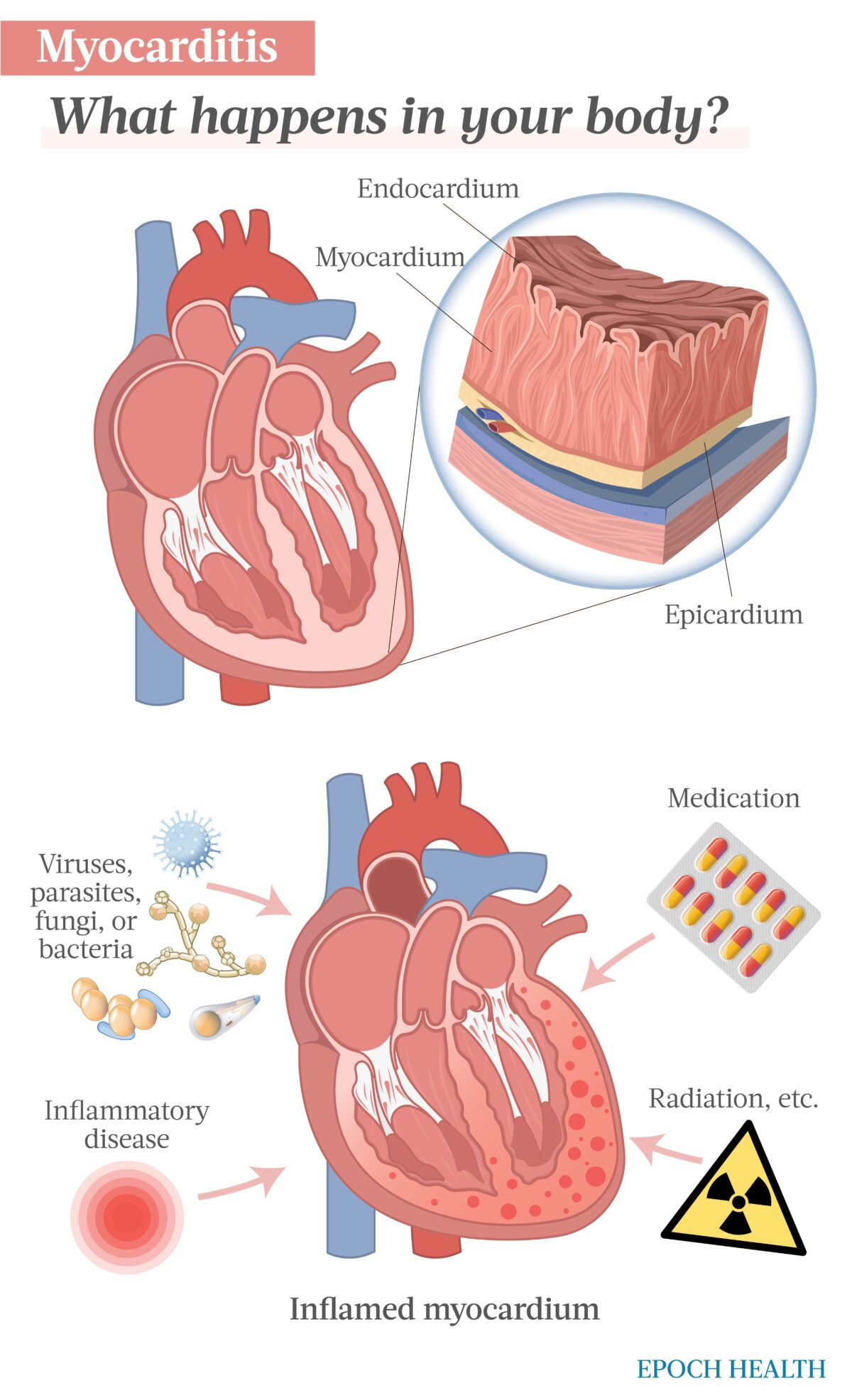


Myocarditis is inflammation of the myocardium, the muscular layer of the heart. This inflammation can weaken the heart and make it less able to pump blood effectively.
Severe myocarditis can weaken the heart to the point that the body doesn’t get enough oxygen. Sluggish muscle contraction and pooling of blood in the heart may result in clots that could travel to the brain, causing a stroke, or to the coronary blood vessels of the heart, causing a heart attack.
The global annual prevalence of myocarditis is estimated to be approximately 17 per 100,000 individuals. The clinical presentation of this disease varies, as does individual outcome. According to a paper published in Circulation: Heart Failure, most cases resolve spontaneously; however, some patients experience severe heart damage that could lead to death.
Myocarditis can be categorized based on the cause, phase, predominant symptoms, and cellular pathology. The diagnostic criteria are continuously changing as researchers gain more insight that evolves our understanding of the disease.
Let’s look at some essential terms associated with different types of myocarditis.
There are also classifications based on how the tissue looks under a microscope (histological presentation):
Symptoms may develop slowly or happen very quickly and may include:
Symptoms of myocarditis in children include:
If you or your child experience symptoms of myocarditis, it is important to seek medical attention right away, particularly if the symptoms include unexplained chest pain, shortness of breath, or rapid heartbeats.
Three distinct layers make up the heart wall. The innermost layer is the endocardium, the middle layer is the myocardium, and the outermost layer is the epicardium. The epicardium is part of the pericardium, a structure that surrounds and protects the heart.
The myocardium is the thickest and strongest layer of the wall of the heart.
Myocarditis refers to inflammation in the myocardium that is not a result of low oxygen supply or a reaction to organ transplantation. It occurs as a result of infection, immune system activation, or exposure to toxic substances.
Myocarditis can be caused by viral, parasitic, bacterial, or fungi infections, diseases that cause inflammation, certain medications, and exposure to certain chemicals.
You’re more likely to get myocarditis if:
If you are exhibiting symptoms of myocarditis, it is important to be evaluated by a doctor. Early diagnosis is important for protecting your heart from further damage. Evaluation begins with your doctor giving you a thorough physical examination, including listening carefully to your heart.
Your doctor may further evaluate you with the following tests depending on your history and physical exam:
Frequently, myocarditis subsides without ongoing complications; however, in some individuals, it may cause life-threatening, extensive complications.
Treatment depends on the severity of myocarditis. Rest is crucial for anyone with this condition. In addition, your doctor may prescribe medication or therapy.
If you are experiencing severe myocarditis, you may need one of the following treatments:
Ongoing stress can contribute to inflammation. It’s important to find stress-reducing activities to lower your stress levels and help lower inflammation. Various methods to help reduce stress can be incorporated into your daily life, such as:
Several nutraceuticals show promising results in the treatment of myocarditis:
Please consult with a health care professional before supplementing with herbs.
While there is nothing you can do that will be 100 percent effective in preventing myocarditis, you can take certain steps to decrease your risk of infection, which helps decrease your overall risk of myocarditis.
Medical reviewed by Beverly Timerding, M.D..

